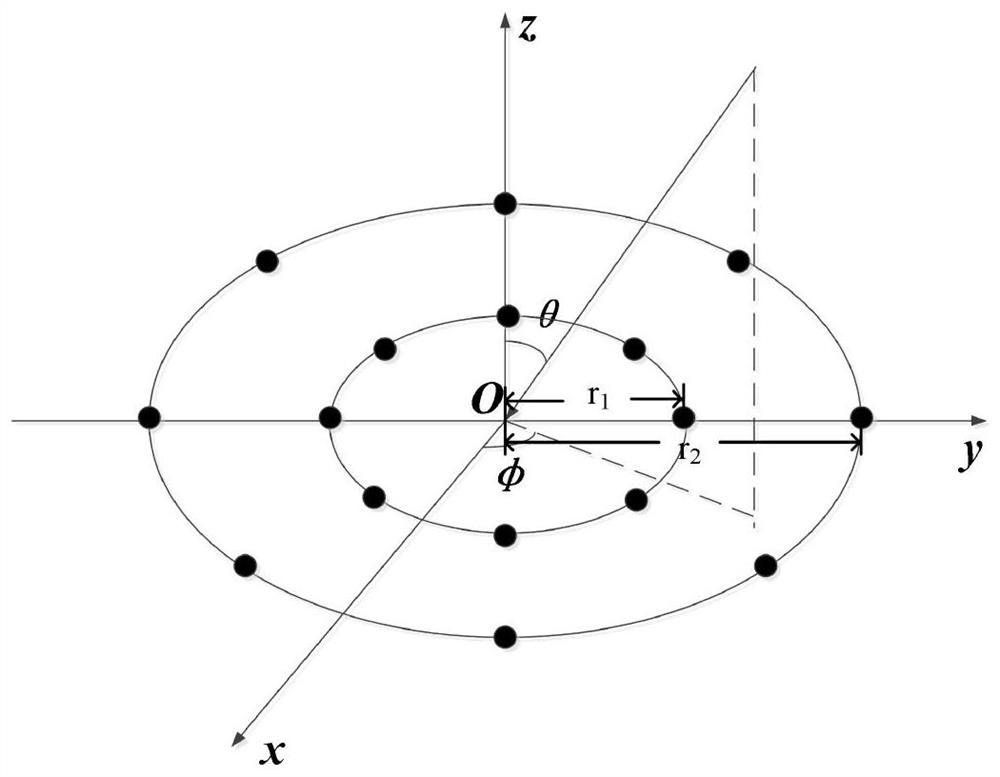Low-complexity DOA estimation method based on co-prime circular array
A low-complexity, circular array technology, used in complex mathematical operations, direction finders using radio waves, radio wave direction/deviation determination systems, etc., which can solve the problem of small spacing between adjacent array elements and reduce the mutual coupling of uniform circular arrays effect and high complexity, to achieve the effect of increasing the array aperture, reducing computational complexity, and high estimation accuracy
- Summary
- Abstract
- Description
- Claims
- Application Information
AI Technical Summary
Problems solved by technology
Method used
Image
Examples
Embodiment Construction
[0042] Below in conjunction with accompanying drawing and specific embodiment the technical solution of the present invention is described in further detail:
[0043] The detailed process of a low-complexity DOA estimation method based on a coprime circular array provided by the present invention is as follows: figure 1 As shown, firstly, the cross-covariance matrix is constructed according to the received data of the two sub-arrays. The enhanced covariance matrix is obtained by using the central symmetry of the position of circular array elements and based on the idea of spatial smoothing. Then the projection matrix which is orthogonal to the direction matrix is constructed by using the improved propagation operator method. According to the orthogonality between the steering vector and the projection matrix, the spatial spectra of the two subarrays are constructed. Finally, the spectral peaks of one of the sub-arrays are substituted into the spatial spectrum of the ...
PUM
 Login to View More
Login to View More Abstract
Description
Claims
Application Information
 Login to View More
Login to View More - R&D
- Intellectual Property
- Life Sciences
- Materials
- Tech Scout
- Unparalleled Data Quality
- Higher Quality Content
- 60% Fewer Hallucinations
Browse by: Latest US Patents, China's latest patents, Technical Efficacy Thesaurus, Application Domain, Technology Topic, Popular Technical Reports.
© 2025 PatSnap. All rights reserved.Legal|Privacy policy|Modern Slavery Act Transparency Statement|Sitemap|About US| Contact US: help@patsnap.com



